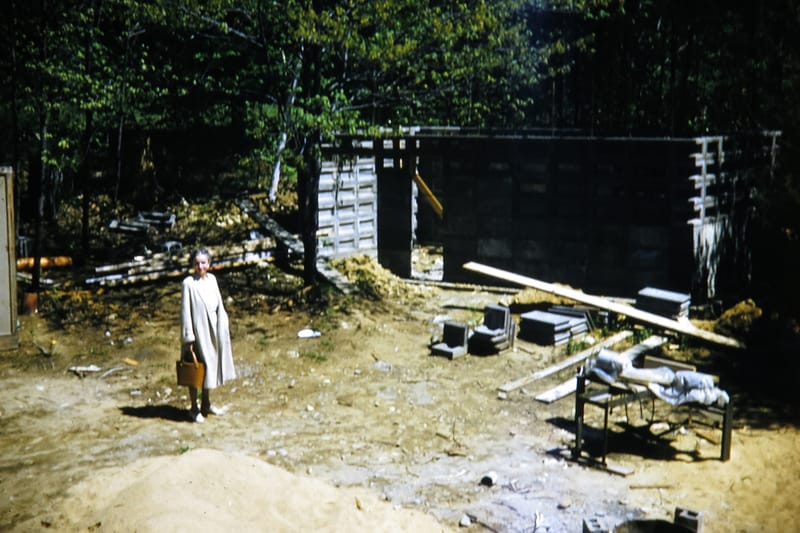Pedals & Pathways: Bike Parking Survey, Theft Protection, Safety, etc.
Do you cycle in Manchester? Would you like to cycle in Manchester, but need more safe & secure parking for your bike? If you would like more bike parking in our city, please help us determine where it’s needed most. Take the survey.
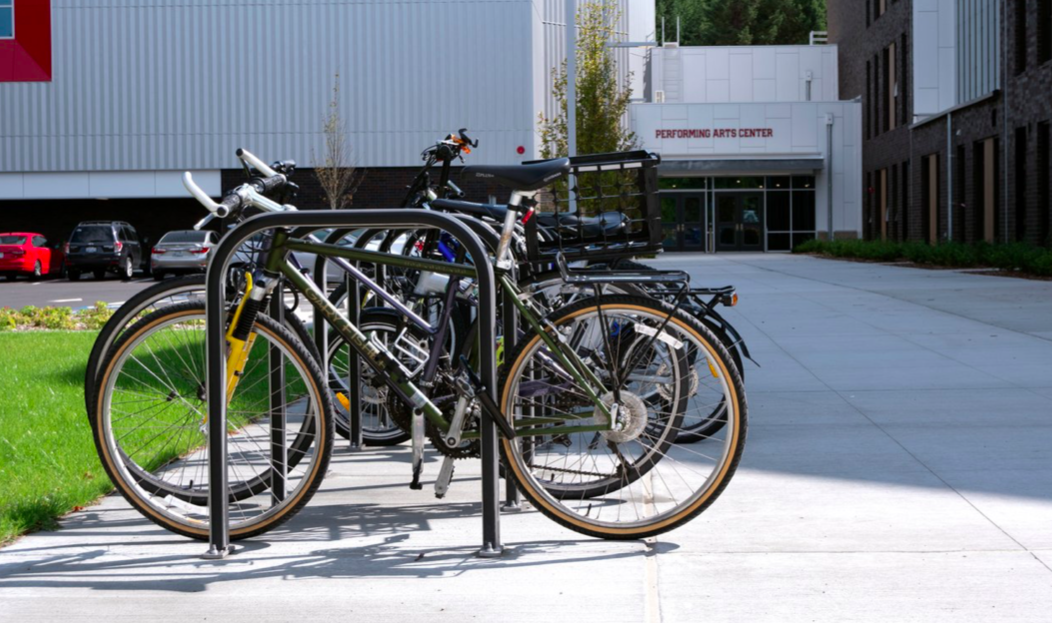

Navigating Manchester’s Urban Paths
Hello Manchester! Man, oh man, I could not believe how cold it was this morning! I wore extra layers as I ventured out today to Chez Vachon, where that hot coffee really hit the spot. Even if you are cycling and walking less than you’d like these days, remember, it’s only temporary. I’m sure some of you are skating instead, or sledding instead, or skiing instead. Soon spring will come and it will be great. Let’s be sure we’re ready!
In this edition, let’s talk about…
- Survey: More Bike Parking
- Bike Maintenance Products
- Bike Index – Bike registration that works
- Tempo – Your answer to bike theft
- Cycling safety in US vs NL
Survey: More Bike Parking
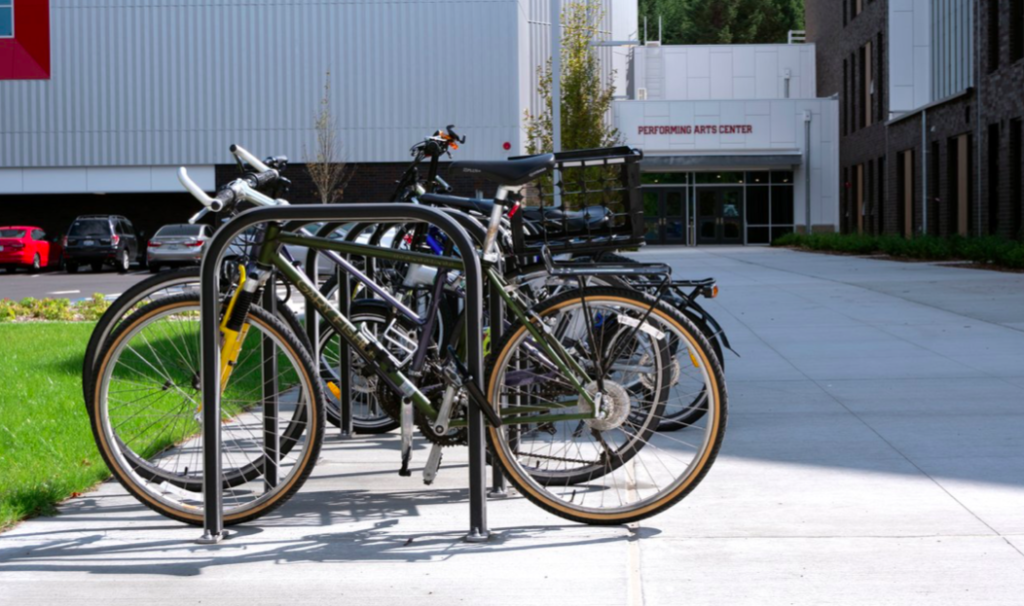
Do you cycle in Manchester?
Would you like to cycle in Manchester, but need more safe & secure parking for your bike?
If you would like more bike parking in our city, please help us determine where it’s needed most. Take the survey at this link.
Or point your mobile camera at the following QR code:

And please share the survey with all your friends! The more, the better!
Bike Maintenance Products
Here are a few products that were recommended to me by a bike mechanic. I look forward to trying them out. If you use them before me, let me know how they work out for you.
For general cleaning of your bike: Dawn Power Wash.

For cleaning & lubricating chains: Finish Line One Step.
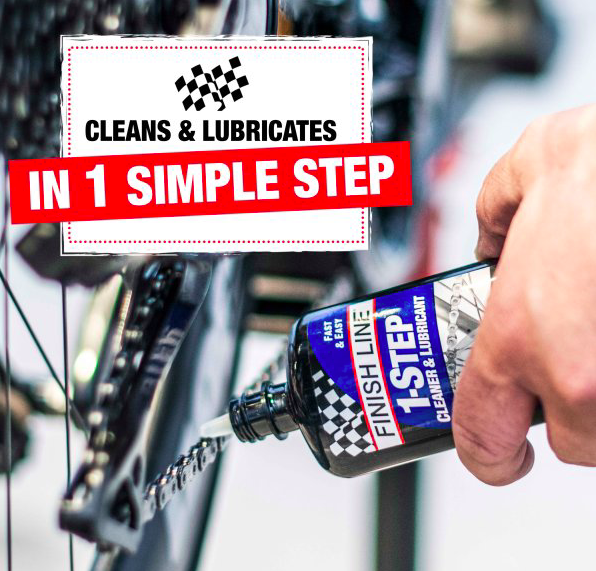
A powerful bike chain degreaser: Finish Line Degreaser.

Derailleur cable lubricant: Tri-Flow.
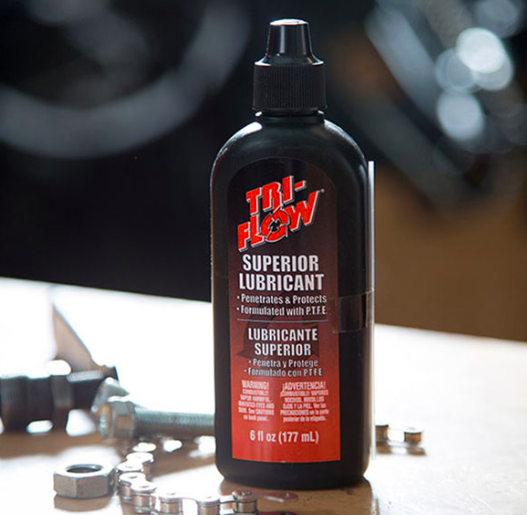
You can find some of these at REI, some at on-line shops, and I’ll bet your local bike shop will have some of them or can recommend equivalents. Plus, it’s always good to know the folks at your local shop!
Bike Index helps recover stolen bikes for free

Bike Index is an online bike registry where anyone can register their bicycle for FREE. Unlike most other registries, the Bike Index database is openly available using an accessible API so that anyone can use it to find and return stolen bicycles. (API stands for Application Programming Interface, which is effectively a way to get information in and out of software.) Because the registry is open to anyone, tracking and recovering bicycles in different cities or even countries becomes possible.
Users can register bikes using frame serial numbers, they can list components and any special characteristics, and upload pictures. Some bike shops can help the customer perform initial registration upon sale for free, and the customer can later update their registry. In case of theft, a bicycle can be marked as stolen at bikeindex.org. Having all the bicycle information handy can also make it easier to file a police report. Furthermore, a user can transfer the entry to a new owner if the bicycle is sold.
Bike Index also lets users register serial numbers for the keys to their bike locks. Registering that info makes it easier to contact the manufacturer for a replacement key in case the original is lost.
Tempo – Another answer to bike theft
Tempo is theft deterrence combined with recovery and a form of bike theft insurance. For about $6 per month, or $199 for three years, the program tackles bike theft in three ways:
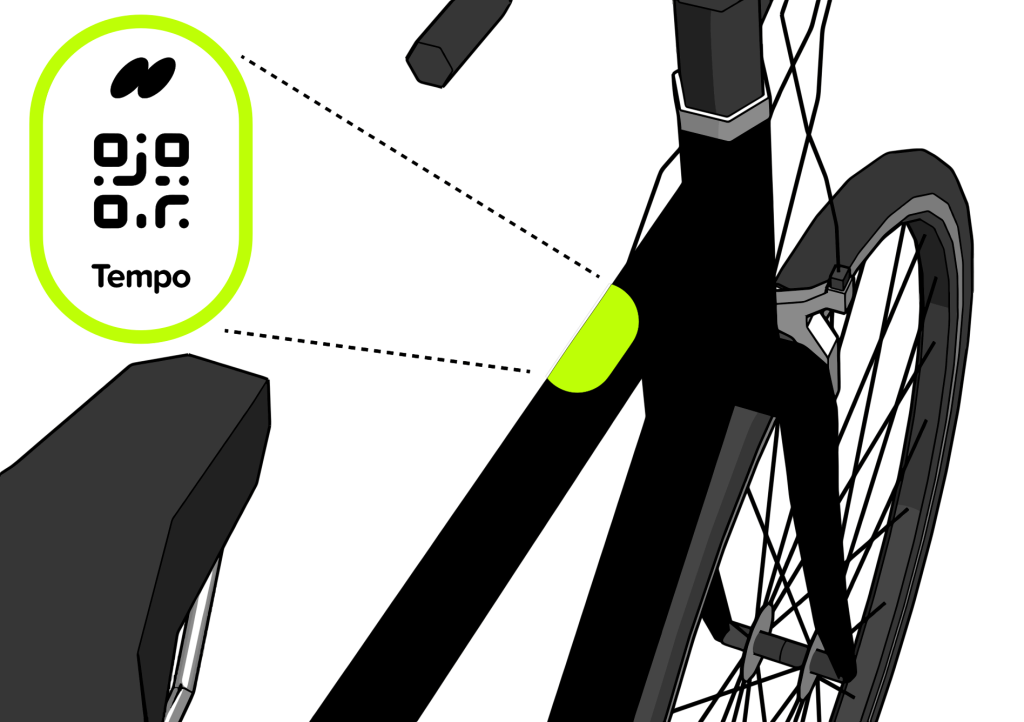
• Prevention. By advertising their program and giving you highly visible and secure stickers to let thieves know that your bike is part of the Tempo system, thieves are deterred because they know it will be more likely that they will get caught if they steal your bike.

• Recovery. The sticker has a QR code and phone number that anyone can use to easily report the bike as stolen.
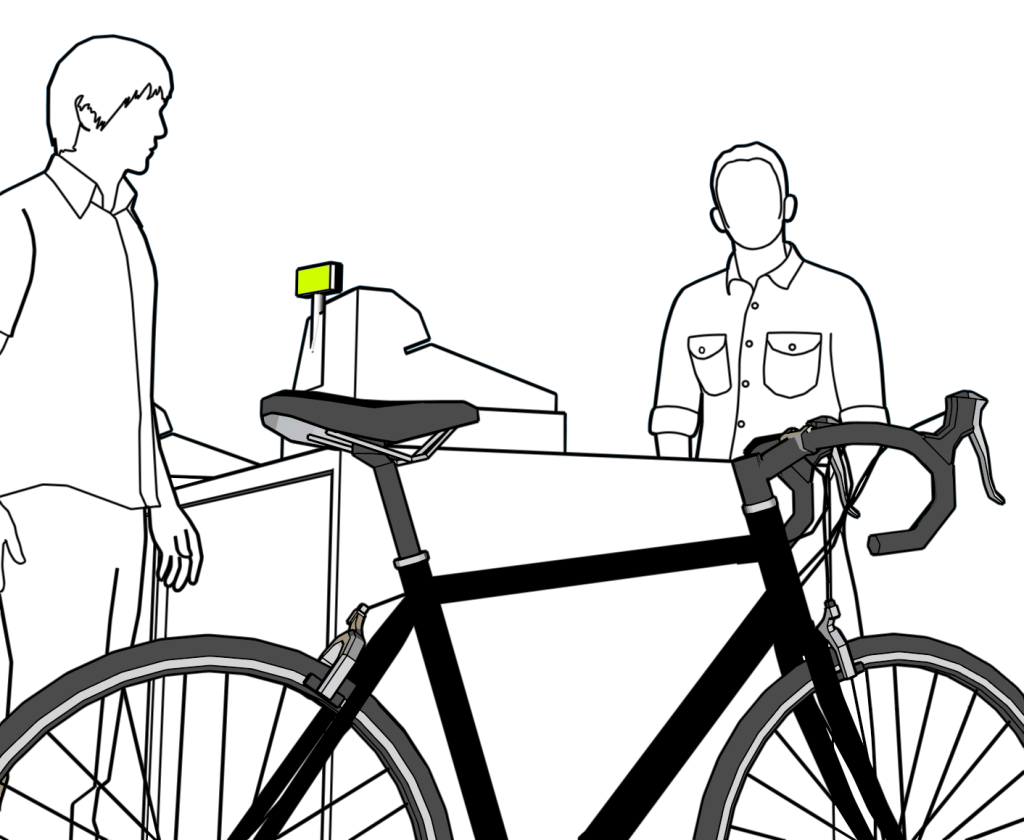
• Replacement. If the first parts of the system (prevention and recovery) fail to keep your bike in your posession, Tempo will replace your bike, up to $2500 of value.
More Details
Tempo Theft Protection includes a QR code badge and a patented UV badge. They each help deter thieves and get your stolen bike returned to you.
When someone scans the QR badge on your bike, it opens your bike’s unique web page. Your bike’s page informs anyone (including thieves) that your bike is protected, and allows people to contact Tempo to share information about the bike.
If you have reported your bike stolen to Tempo, your bike’s page changes to notify people and ask for their help getting the bike back.
The UV badge has a unique ID and a phone number someone can call if they find your bike. Even if the badge is removed, the ID and phone number remain on the bike, but are invisible to the naked eye, using patented anti-theft UV technology found on millions of cars, but available for bikes only through Tempo. Law enforcement officers carry a UV light to check for IDs on suspected stolen goods. They can call the number to get your bike back to you.
At the moment, Tempo is only available for newer bikes, specifically bikes purchased in the last 60 days, or bikes that you plan to purchase after joining Tempo. This limits how the policy could be exploited by dishonest actors, which would drive up the cost for everyone. We are looking for ways to expand our offering to include older bikes.
Cycling safety in the US vs the Netherlands
I wrote recently in this column about Jared Henderson who now lives in Manchester after spending several years in the Netherlands, a place that’s extremely safe to walk or cycle. I also wrote here recently about a concept called Vision Zero, a data-driven initiative to reduce traffic fatalities to zero and which has been embraced by policymakers around the globe. It’s beginning to be embraced here in the U.S., but we sure have a long way to go. In fact, in the last 10 years, fatalities for American pedestrians and cyclists have risen sharply. Not encouraging!
In the next two graphs data is presented showing deaths per million travelers, with mode of travel divided three ways, between car, bicycle, and pedestrian. One graph shows data for the US, and the next graph shows the same data for the Netherlands. Both graphs come from the University of Connecticut. First, the graph for the US:
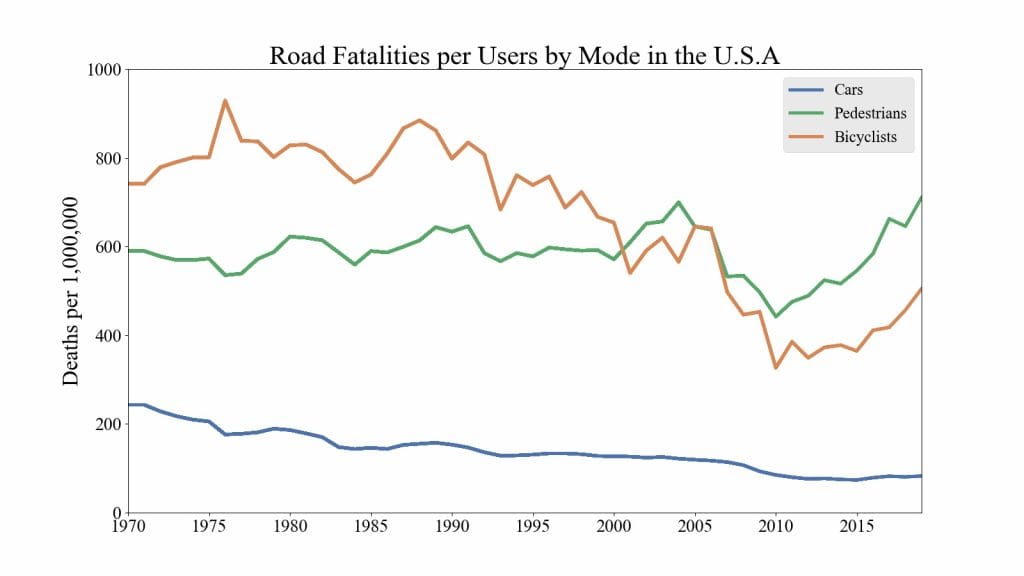
This graph tells us that, in 2020 (at the right edge of the graph), of every million travelers in cars, roughly 100 died (the blue line). Of every million cyclists, roughly 500 died (the orange line). And of every million pedestrians, roughly 700 died (the green line).
You can also see how the lines for cyclists and pedestrians have curved upward over the last ten years. A bit worrisome.
But in the Netherlands, the picture is drastically different. The Netherlands today has one of the lowest traffic fatality rates in the world.
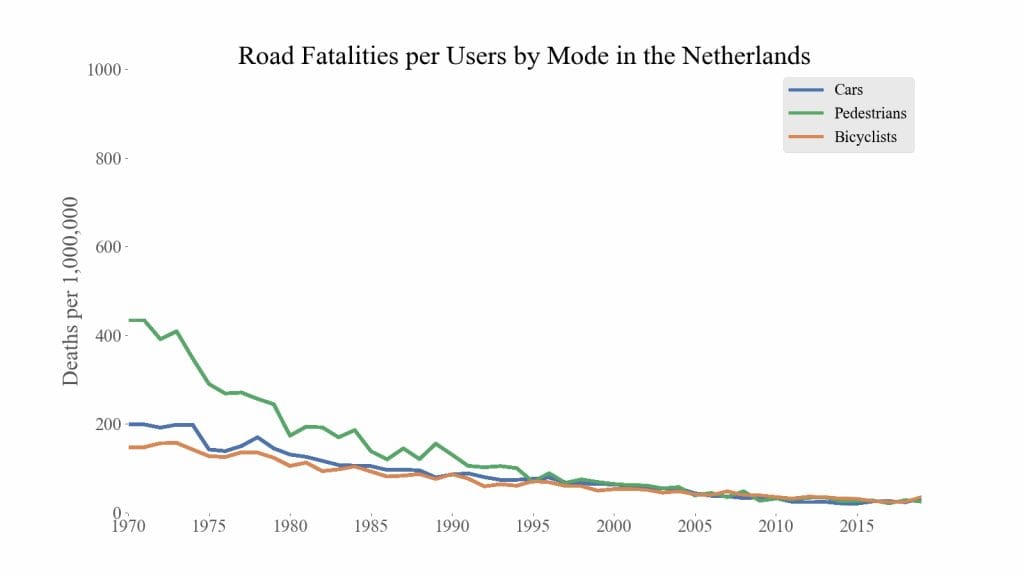
The two graphs depict the same time period, from 1970 to today, stretching from left to right. Both graphs show that the average number of deaths per million car passengers (the blue line) is pretty low in both countries, though a bit lower in the Netherlands. But the average number of deaths per million pedestrians (green)? Or per million cyclists (orange)? Compared to the Netherlands, the US is a blood bath. Rates today are shown below:
NL cars ..... 23 per million travelers
peds .... 23
bikes ... 23
US cars ..... ~60 per million, about 3 times higher than NL
peds .... 686 per million, almost 30 times higher than NL
bikes ... ~500 per million, almost 22 times higher than NL
Why should an American pedestrian be 30 times as likely to die in traffic as a Dutch pedestrian? How are roads & travel different in the NL compared to the US, in ways that contribute to this enormous discrepancy? Why do we in the US accept this situation, with its significant loss of life? And is there anything we can do to reduce those odds here in the US? To make life safer for the people that live here? To begin to slowly approach Vision Zero? Vision Zero is a somewhat abstract and mathematical term, but what it truly means is just making life safer for the people around us. That’s important to remember.
Read more at this link.
Finally, the following graph helps illustrate this same issue, also showing that other countries are spread out between the US and the NL in terms of the numbers of cyclists and the safety of those cyclists.
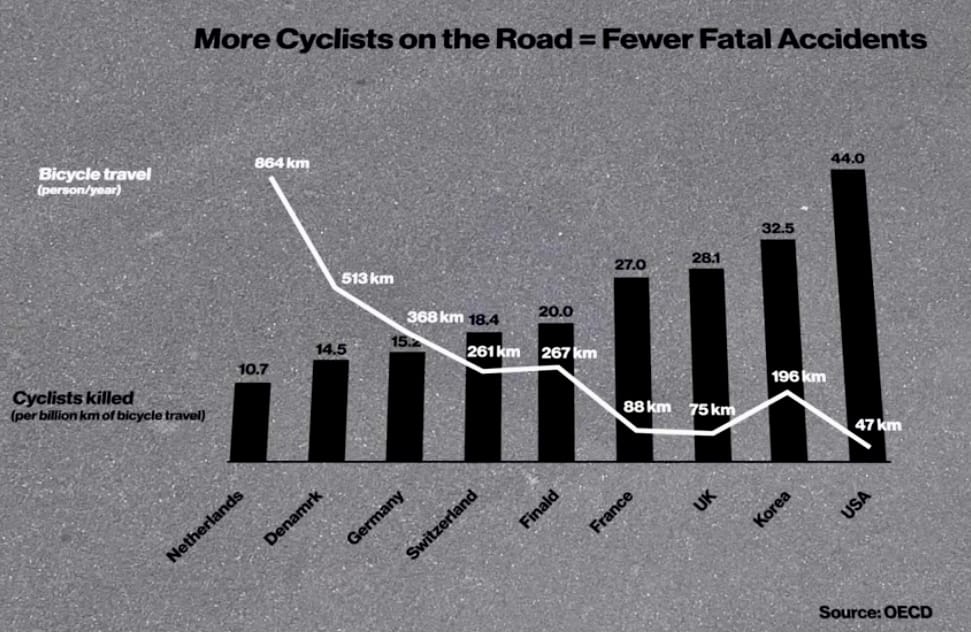
Note that this graph does *NOT* show causality — it says nothing about what caused what, nor why. But it does indicate correlation, which simply means two things often happen together. Correlation could mean that (a) one event caused the other, or that (b) some other third event caused them both, or that (c) the chain of connection between the two events is possibly very complicated.
Watch this space as I will probably revisit this topic in the future. We all deserve safe roads!
Call for Input
We very much want to hear from you! Do you have any questions or concerns? What topics would you like us to cover? Send your feedback our way and we’ll get on it! Just click here. We want to ensure this column meets your needs.
Stay safe and warm and have fun out there!


